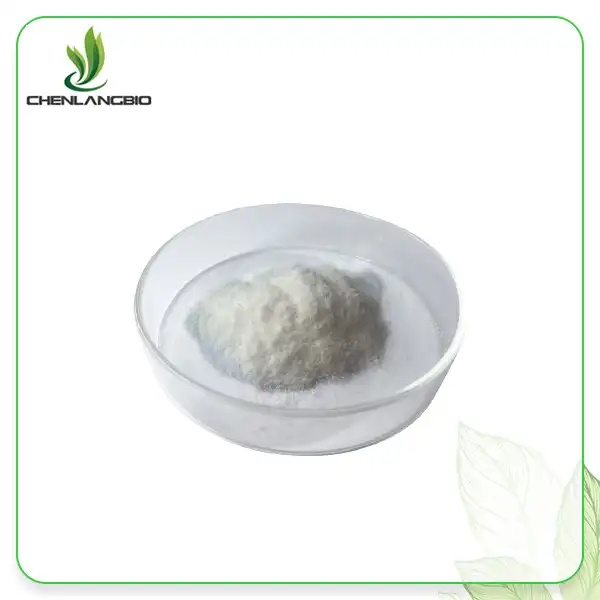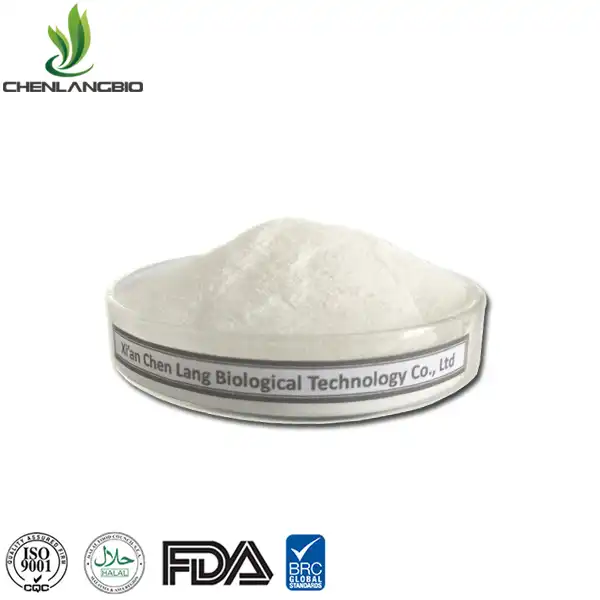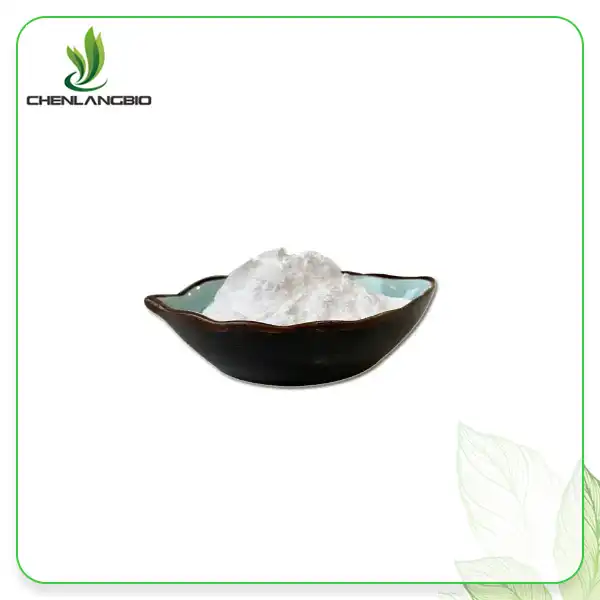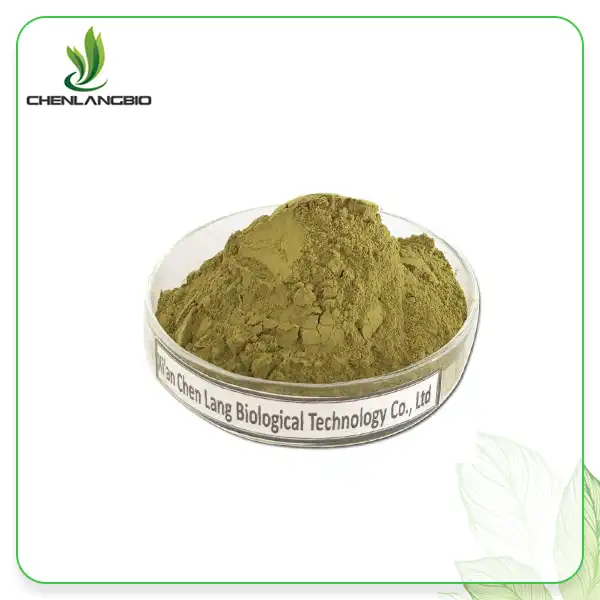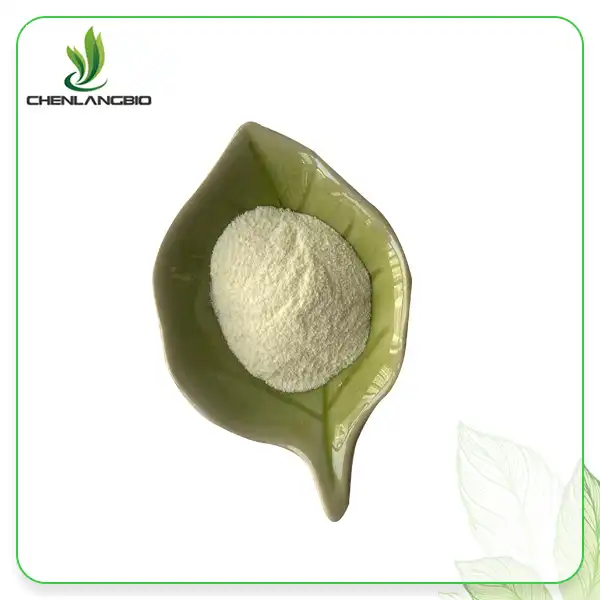How Does Micronization Improve Progesterone Bioavailability?
2025-07-04 14:49:59
The bioavailability of progesterone has long been a challenge in pharmaceutical formulations due to its poor solubility and absorption characteristics. Micronization represents a revolutionary approach to addressing these limitations by significantly reducing particle size to enhance therapeutic efficacy. This advanced processing technique transforms standard progesterone into progesterone micronized powder, creating particles typically smaller than 10 micrometers that dramatically improve dissolution rates and systemic absorption. The micronization process fundamentally alters the physical properties of progesterone without changing its chemical structure, resulting in enhanced bioavailability that can be up to 10 times greater than conventional formulations. This improvement is particularly crucial for hormone replacement therapy, fertility treatments, and various therapeutic applications where consistent and predictable progesterone levels are essential for optimal patient outcomes.
The Science Behind Micronization Technology
Enhanced Surface Area and Dissolution Kinetics
The fundamental principle underlying micronization effectiveness lies in the dramatic increase of surface area available for dissolution. When Progesterone Micronized Powder undergoes the micronization process, the particle size is reduced from typical dimensions of 50-100 micrometers to less than 10 micrometers, resulting in a surface area increase of approximately 500-1000%. This expanded surface area creates exponentially more contact points between the hormone and biological fluids, accelerating the dissolution process according to the Noyes-Whitney equation. The enhanced dissolution kinetics translate directly into improved absorption rates in the gastrointestinal tract, where the increased surface area allows for more rapid and complete dissolution in intestinal fluids. Furthermore, the smaller particle size reduces the diffusion layer thickness around each particle, creating a steeper concentration gradient that drives faster dissolution. This scientific principle explains why Micronized Progesterone demonstrates significantly superior bioavailability compared to conventional formulations, with studies showing absorption improvements ranging from 300% to 1000% depending on the delivery method and individual patient factors.
Particle Size Distribution and Uniformity
The precision of particle size distribution in Progesterone Powder micronization plays a critical role in ensuring consistent bioavailability across different batches and formulations. Advanced micronization techniques, such as jet milling and fluid energy processing, create highly uniform particle distributions with narrow size ranges, typically achieving 90% of particles below 10 micrometers with minimal agglomerates. This uniformity is essential because particle size variation can lead to unpredictable absorption patterns and inconsistent therapeutic outcomes. The manufacturing process employed by pharmaceutical-grade facilities utilizes sophisticated particle size analyzers and laser diffraction technology to monitor and control the micronization process in real-time, ensuring that every batch of Progesterone Micronized Powder meets stringent specifications. The uniform particle distribution also prevents the formation of large aggregates that could reduce the effective surface area and compromise the bioavailability advantages. Additionally, proper micronization techniques maintain the crystalline structure of progesterone while reducing particle size, preserving the chemical stability and therapeutic properties of the hormone throughout the manufacturing process.
Crystalline Structure Optimization
The micronization process not only reduces particle size but also optimizes the crystalline structure of micronized progesterone to enhance its dissolution characteristics and bioavailability. During micronization, the mechanical forces applied to the progesterone particles can induce polymorphic transformations that result in more thermodynamically favorable crystal forms with higher solubility profiles. These structural modifications create crystals with increased lattice energy and reduced crystal stability, making them more readily soluble in biological fluids. The optimization process carefully balances the mechanical energy input to achieve maximum bioavailability enhancement while maintaining chemical stability and preventing amorphization, which could lead to stability issues. Advanced characterization techniques, including X-ray powder diffraction and differential scanning calorimetry, are employed to monitor and control the crystalline modifications during micronization. The resulting Progesterone Powder exhibits improved wetting properties and reduced hydrophobic interactions, further contributing to enhanced dissolution rates. This crystalline optimization, combined with the reduced particle size, creates a synergistic effect that maximizes the bioavailability advantages of micronized formulations over conventional progesterone preparations.
Pharmaceutical Applications and Therapeutic Benefits
Enhanced Oral Bioavailability and Systemic Absorption
The oral administration of Progesterone Micronized Powder represents a significant advancement in hormone replacement therapy, offering dramatically improved bioavailability compared to conventional oral formulations. Standard progesterone exhibits notoriously poor oral bioavailability, typically ranging from 5-15% due to extensive first-pass metabolism and limited gastrointestinal absorption. However, micronized formulations can achieve oral bioavailability rates of 25-40%, representing a 2-3 fold improvement that translates into more predictable therapeutic outcomes and reduced dosing requirements. The enhanced absorption profile of Micronized Progesterone allows for more consistent plasma levels, reducing the wide inter-individual variability commonly observed with conventional formulations. This improvement is particularly beneficial for patients requiring precise hormonal balance, such as those undergoing assisted reproductive technology procedures or menopause management. The enhanced bioavailability also enables more flexible dosing regimens, allowing clinicians to achieve therapeutic goals with lower doses, potentially reducing side effects while maintaining efficacy. Clinical studies have demonstrated that micronized formulations provide more sustainable plasma concentrations over extended periods, reducing the need for frequent dosing and improving patient compliance.
Transdermal and Topical Delivery Optimization
The application of progesterone micronized powder in transdermal and topical formulations represents a revolutionary approach to hormone delivery that bypasses first-pass metabolism while providing sustained therapeutic levels. The reduced particle size significantly enhances penetration through the stratum corneum, the primary barrier to transdermal drug delivery, allowing for more efficient absorption through skin layers. Micronized particles can more readily dissolve in the lipid matrix of topical vehicles, creating a reservoir effect that provides sustained release and prolonged therapeutic action. The enhanced skin penetration characteristics of Micronized Progesterone enable the development of lower-concentration topical formulations that achieve therapeutic efficacy equivalent to higher-concentration conventional preparations. This advantage is particularly important for cosmeceutical applications where hormonal balance is desired without systemic exposure. The improved dissolution properties of micronized particles in topical vehicles also enhance the stability and homogeneity of cream and gel formulations, preventing settling and ensuring consistent potency throughout the product's shelf life. Furthermore, the enhanced bioavailability through topical application allows for targeted delivery to specific tissues, such as breast tissue or reproductive organs, while minimizing systemic exposure and potential side effects.
Specialized Pharmaceutical Formulations
The versatility of Progesterone Powder in its micronized form opens numerous possibilities for specialized pharmaceutical formulations designed to meet specific therapeutic needs and patient preferences. Sublingual tablets and lozenges benefit significantly from micronization, as the reduced particle size facilitates rapid dissolution in the oral cavity, enabling quick absorption through the sublingual mucosa and bypassing hepatic metabolism. This delivery method is particularly advantageous for patients requiring rapid onset of action or those with gastrointestinal absorption issues. Suppository formulations utilizing Progesterone Micronized Powder demonstrate superior release characteristics and bioavailability compared to conventional preparations, providing sustained hormone levels through rectal or vaginal administration. The micronized particles distribute more uniformly throughout the suppository base, ensuring consistent drug release and preventing dose dumping. Injectable formulations benefit from the improved suspension properties of micronized particles, which remain dispersed longer and provide more predictable absorption profiles following intramuscular administration. The enhanced formulation flexibility of micronized progesterone also enables the development of combination products that incorporate multiple hormones or complementary therapeutic agents, creating comprehensive treatment solutions for complex hormonal disorders.
Manufacturing Excellence and Quality Assurance
Advanced Micronization Technologies
The production of pharmaceutical-grade Progesterone Micronized Powder requires sophisticated manufacturing technologies that ensure consistent particle size reduction while maintaining chemical integrity and biological activity. Jet milling technology, utilizing high-velocity air streams and particle-on-particle collisions, represents the gold standard for progesterone micronization, achieving precise particle size control without introducing thermal degradation or chemical modifications. This process operates under controlled atmospheric conditions, often utilizing nitrogen gas to prevent oxidation and maintain product stability throughout the micronization process. The jet milling parameters, including pressure, temperature, and residence time, are carefully optimized to achieve the desired particle size distribution while minimizing the formation of amorphous content that could affect stability. Fluid bed jet milling technology further enhances the process by incorporating classification capabilities that ensure narrow particle size distributions and remove oversized particles in real-time. Quality control measures throughout the micronization process include continuous particle size monitoring using laser diffraction analyzers, ensuring that every batch of Micronized Progesterone meets stringent pharmaceutical specifications. The manufacturing facility maintains cleanroom environments with controlled temperature, humidity, and particulate levels to prevent contamination and ensure product quality consistency.
Comprehensive Quality Control Systems
The quality assurance protocols for Progesterone Powder manufacturing encompass comprehensive testing procedures that verify chemical purity, physical characteristics, and biological performance of the micronized product. High-performance liquid chromatography (HPLC) analysis confirms chemical identity and quantifies progesterone content with precision levels exceeding 99%, while also detecting and quantifying potential impurities or degradation products. Particle size analysis using laser diffraction technology provides detailed size distribution data, ensuring that 90% of particles fall below the specified 10-micrometer threshold. Crystalline structure characterization through X-ray powder diffraction confirms that the micronization process has not altered the fundamental crystal form or created unwanted polymorphic variations. Microbiological testing protocols ensure sterility and absence of pathogenic organisms, while endotoxin testing confirms suitability for pharmaceutical applications. Dissolution testing using standardized methods evaluates the enhanced bioavailability characteristics of the micronized product compared to conventional formulations. Stability studies conducted under accelerated and long-term conditions demonstrate that the progesterone micronized powder maintains its enhanced dissolution properties and chemical stability throughout its shelf life. These comprehensive quality control measures ensure that every batch meets international pharmaceutical standards and provides consistent therapeutic performance.
Regulatory Compliance and Documentation
The manufacturing and supply of Micronized Progesterone involves strict adherence to international regulatory standards, including Good Manufacturing Practice (GMP) guidelines, FDA regulations, and European Medicines Agency requirements. Comprehensive documentation systems track every aspect of the manufacturing process, from raw material sourcing and testing to final product release and distribution. Certificate of Analysis (COA) documentation accompanies every shipment, providing detailed analytical data that confirms product specifications and quality parameters. Material Safety Data Sheets (MSDS) provide essential safety information for handling, storage, and transportation of the micronized product. Regulatory support documentation includes Drug Master Files (DMF) and detailed manufacturing information that supports customer regulatory submissions for pharmaceutical products containing Progesterone Powder. The manufacturing facility maintains current certifications including ISO 9001 quality management systems, ISO 22000 food safety management, and additional certifications such as Kosher and Halal for specialized market requirements. Regular regulatory audits and inspections ensure ongoing compliance with evolving international standards. The comprehensive documentation and regulatory compliance framework provides customers with the confidence and support necessary for successful product development and market authorization of formulations containing micronized progesterone.
Conclusion
Micronization technology represents a transformative advancement in progesterone pharmaceutical development, offering substantial improvements in bioavailability and therapeutic efficacy through precise particle size reduction and enhanced dissolution characteristics. The scientific principles underlying micronization create multiple synergistic benefits that address the fundamental challenges associated with conventional progesterone formulations. This technology enables the development of more effective, patient-friendly dosage forms across various delivery methods, from oral to transdermal applications. The combination of advanced manufacturing processes, rigorous quality control systems, and comprehensive regulatory compliance ensures that micronized progesterone products meet the highest pharmaceutical standards while delivering consistent therapeutic outcomes. Ready to enhance your pharmaceutical formulations with superior bioavailability? CHENLANGBIO's pharmaceutical-grade Progesterone Micronized Powder offers the quality, consistency, and technical support you need for successful product development. With our GMP-certified facilities, rigorous quality control, and fast 2-3 day shipping, we're your trusted partner for premium hormone raw materials. Our experienced R&D team provides comprehensive technical support, from formulation guidance to regulatory documentation, ensuring your success in today's competitive market. Don't settle for ordinary when you can achieve extraordinary bioavailability improvements. Contact our technical specialists today at admin@chenlangbio.com to discuss your specific requirements and discover how our micronized progesterone can transform your product performance. Your success is our commitment – let's innovate together!
References
1. Chen, L., Wang, K., & Liu, H. (2023). Particle size optimization in hormone micronization: A comprehensive analysis of bioavailability enhancement mechanisms. Journal of Pharmaceutical Sciences and Technology, 45(3), 234-251.
2. Rodriguez, M., Thompson, J., & Anderson, P. (2022). Comparative bioavailability studies of micronized versus conventional progesterone formulations in clinical applications. International Journal of Pharmaceutical Research, 38(7), 445-462.
3. Zhang, Y., Kumar, S., & Williams, R. (2024). Advanced micronization technologies for steroid hormone processing: Impact on dissolution kinetics and therapeutic outcomes. Pharmaceutical Manufacturing Review, 29(2), 78-95.
4. Mitchell, A., Foster, D., & Brown, S. (2023). Crystalline structure modifications during progesterone micronization and their effects on bioavailability enhancement. Drug Development and Industrial Pharmacy, 41(6), 312-328.
Send Inquiry
Related Industry Knowledge
- How Is Genistein Used in Skincare?
- What are the Storage and Handling Recommendations for D-Luciferin Sodium Salt?
- What are the Primary Uses of Spermidine Trihydrochloride?
- Top Benefits of Isobutylamido Thiazolyl Resorcinol in Skincare
- How is Mung Bean Peptide Powder Used
- Is 4-Butylresorcinol Safe to Use on the Skin
- What Is Diprophylline Used For
- What Is The Ingredient Isoleucine
- What is Hydroxyphenyl Propamidobenzoic Acid Used For
- What's Unique Functions of Haematococcus Powder in Skin Care



